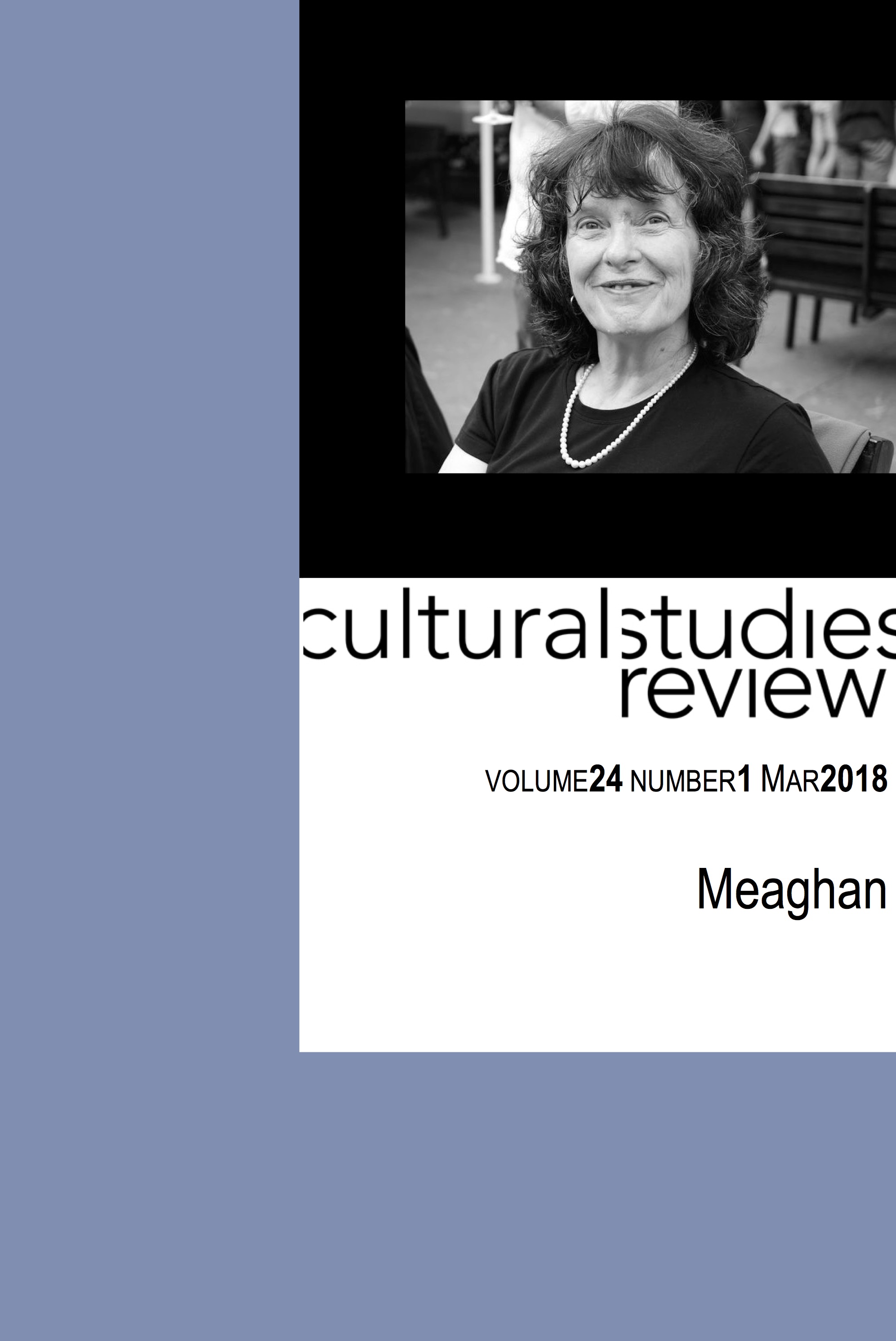Meaghan Morris Thing
Main Article Content
Abstract
Certainly, when people say to me, as they often have done, ‘I can’t remember anything afterward,’ I think, Great, that’s the point! The work is not there to be repeated or identified with, but something works on you.
Adam Phillips1
‘Ironically,’ Meaghan Morris writes, ‘no text is more bleached of cultural particularity than the one which relentlessly theorizes “difference” without ever once stumbling over some stray material fact—a poem, a press photo, a snatch of TV news—that could, in its everyday density, take “theory” by surprise.’2 Ecstasy and Economics itself pops up as a ‘stray material fact’ that took me by surprise as a student more than two decades ago, and it still does. First, consider its surprising contents page: it dedicates what it terms ‘American essays’ to the late Australian poet John Forbes, a pairing at face value as surprising as the pairing of ecstasy and economics. That surprise extends to the pun of its cover photograph, a parody of Max Dupain’s 1937 photo The Sunbaker by Anne Zahalka, an image which recalibrates the photograph’s late Modern complexion by substituting a bleached and blurry beach surround for the deep shadows of the original. This image feels as historical now as the Dupain’s earlier subtlety of tone; Ecstasy and Economics analyses that ‘bleaching’ itself, the ‘stumbling’ into theory (as John Mowitt would say) where the unexpected ‘stray material fact’ renews analysis against sheer stultification.3 In the case of its cover photo the stray fact is hue, shade, distinction: a head of red hair whose capacity to surprise installs difference as surprise.
Article Details
Section
Authors who publish with this journal agree to the following terms:
a) Authors retain copyright and grant the journal right of first publication with the work simultaneously licensed undera Creative Commons Attribution License that allows others to share and adapt the work with an acknowledgement of the work's authorship and initial publication in this journal.
b) Authors are able to enter into separate, additional contractual arrangements for the non-exclusive distribution of the journal's published version of the work (e.g., post it to an institutional repository or publish it in a book), with an acknowledgement of its initial publication in this journal.
c) Authors are permitted and encouraged to post their work online (e.g., in institutional repositories or on their website) prior to and during the submission process, as it can lead to productive exchanges, as well as earlier and greater citation of published work (See The Open Access Citation Advantage Service). Where authors include such a work in an institutional repository or on their website (ie. a copy of a work which has been published in a UTS ePRESS journal, or a pre-print or post-print version of that work), we request that they include a statement that acknowledges the UTS ePRESS publication including the name of the journal, the volume number and a web-link to the journal item.
d) Authors should be aware that the Creative Commons Attribution (CC-BY) License permits readers to share (copy and redistribute the work in any medium or format) and adapt (remix, transform, and build upon the work) for any purpose, even commercially, provided they also give appropriate credit to the work, provide a link to the license, and indicate if changes were made. They may do these things in any reasonable manner, but not in any way that suggests you or your publisher endorses their use.
